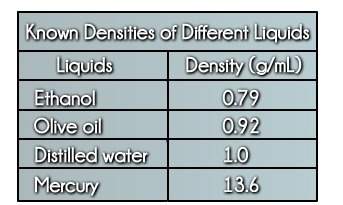Phenomenon:
If a tablecloth (or a large piece of paper) is pulled quickly enough from u...

Physics, 05.05.2020 06:07, ComicSans10
Phenomenon:
If a tablecloth (or a large piece of paper) is pulled quickly enough from under some objects sitting on it, those objects slide only a very short distance on the table top after the tablecloth has been pulled out from under them. This implies that they acquired only a small velocity from the tablecloth moving out from under them. If the tablecloth is pulled a little less quickly, the objects slide a little further on the table top, implying they acquired a slightly greater velocity. Establishing which part of the phenomenon we need to focus on:
1. The momentum of an object is first increased as the paper is pulled out from under it. Then the momentum is decreased back to zero as it slides to a stop on the table. How far it slides on the table after the paper is pulled out from under it is a qualitative measure of the speed it acquired when the paper was sliding under it: the greater the distance it slid, the greater the speed it had acquired. So, thinking in terms of impulse and momentum, which force acting through what time interval determined the maximum speed the object acquired before sliding to a stop on the table top?Brief
2. Express the friction force, which is the horizontal component of the force the paper exerts on the object, F(paper on object) , as a constant (coefficient of friction μ) times the object’s weight mg.
3. Make two complete Momentum Charts
–including force diagrams
–for one of the objects on your table(such as keys, small bottles, etc.)that is sitting on a piece of paper, which is pulled out from under it.
One Momentum Chart should show the process when the paper is pulled quickly, and the second Momentum Chart should show the process when it is pulled less quickly. Consider the interval to be just before the pull until immediately after the paper is no longer under the object.
4. Does how fast you pull the tablecloth affect the net force acting on the object? Identify exactly what things are exerting forces on your object!
5. Develop an explanation of these phenomena using the Momentum Charts you have prepared. Start by writing out an expression for impulse.
6. Do all the objects appear to move about the same distance for a given pull? How can you explain this?
7. If you know the initial and the final momentum, you know the impulse. In each of your scenarios, did you have the same or a different impulse? So what is the effect of changing t?
I am not sure how to go with this question

Answers: 3
Other questions on the subject: Physics

Physics, 22.06.2019 06:30, itzyoboyCj
Organelles are 1. responsible for producing power for the cell 2. tiny structures in the cell that carry out the cell's activities 3. responsible for digestion in the cell 4. found outside of the membrane
Answers: 1

Physics, 23.06.2019 00:30, janeou17xn
What os the equation of the line described below written in slope-intercept form? the line passing through point (0,0) and parallel to the line whose equation is 3x+2y-6=0
Answers: 3


Physics, 23.06.2019 08:30, 01222002
Atension test was conducted on a specimen of aisi 1020 hot-rolled steel having an initialdiameter of 9.11 mm. representative test data are given in table1in the form of force and engineering strain. for strain the extensometer gage length was li= 50.8 mm. in addition, minimumdiameters were measuredmanually with a micrometer in the necked region at several points during the test. after fracture, thebroken halves were reassembled, and the following measurements were made: (1) marks originally 25.4 mm apart and on opposite sides of the necked regionwere 38.6 mm apart due to the lengthwise stretching in the specimen; (2) similar marks originally 50.8 mm apart were 70.9 mmapart; (3) the final minimum diameter in the necked region was 5.28 mma) determine the following material properties: elastic modulus, 0.2% offset yield strength, ultimate tensile strength, percent elongation, and percent reduction in area. b) assume that the test was interrupted upon reaching a strain u = 0.007, and the specimen unloaded to zero force. estimate the elastic strain recovered and the plastic strain remaining. also, what would the new length of the original 50.8 mm gage section. hint: might save time/effort to use excel, mathcad, matlab, etc. to solve part a)table1 data and analysis for a tension test on aisi 1020 hot-rolled steeltest dataforce (p, kn)1. 0.002. 6.673. 13.344. 19.135. 17.796. 17.217. 17.538. 17.449. 17.2110. 20.7711. 24.2512. 25.7113. 25.7514. 25.0415. 23.4916. 21.3517. 18.9018. 17.39engr. strain (ε)1. 02. 0.00053. 0.00104. 0.00155. 0.00236. 0.00317. 0.00508. 0.00709. 0.010010. 0.049011. 0.125012. 0.218013. 0.234014. 0.306015. 0.330016. 0.348017. 0.360018. 03660diameter (d, mm)1. 9.112. 9.113. 9.114. 9.115. 9.116. 9.117. 9.118. 9.119. 9.1110. 8.8911. 8.8912. 8.2613. 8.2614. 7.6215. 6.9916. 6.3517. 5.7218. 5.28
Answers: 2
Do you know the correct answer?
Questions in other subjects:




Mathematics, 13.06.2020 19:57


Mathematics, 13.06.2020 19:57


History, 13.06.2020 19:57

Mathematics, 13.06.2020 19:57







